These things always begin innocently, at a crafts fair. This particular fair was at Lincoln Center, where I normally wouldn’t think of buying pearls. But there was a vendor with pearls in colors I’d never seen before: iridescent purples, pinks, bronzes. I hated them. And then I loved them. “Those colors are so—so lurid!” I said, meaning it as a compliment. “Are they dyed?”
They weren’t. And this was something new. Purple pearls don’t occur in nature—or rather, they didn’t. “These are Ming pearls,” the vendor, Kathryn Martinez, told me, “also called Edison pearls. They’re Chinese freshwater pearls that resemble the Japanese Kasumiga pearls.” She’d lost me. All I heard was “freshwater pearls,” which are supposed to be more affordable than saltwater pearls. Her pearls struck me as pricey, so I didn’t buy them. But they haunted me.
Here’s what she was talking about. Freshwater pearls are cultured from mussels in lakes and ponds—as opposed to saltwater pearls, which are cultured from oysters in ocean beds. The freshwater pearls I grew up with were the small “rice krispie” pearls that saturated the market in the 1970s. They were cheap and not very lustrous, nothing at all like the luminous, glowing saltwater pearls—Akoyas, South Sea pearls and Tahitians. In recent years, though, the Chinese have been producing freshwater pearls that approach the quality of their far more expensive saltwater counterparts. (Saltwater pearls come in many colors, but not the lurid ones I’m focusing on in this post.)
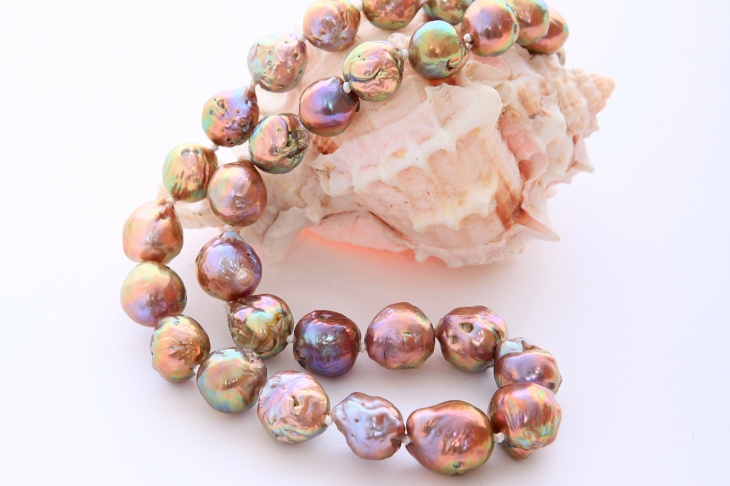
True Kasumi pearls, shown above, are large freshwater pearls cultivated in Japan’s Lake Kasumi-ga-Ura. They’re baroque pearls—rippled and misshapen—and they come in those lurid iridescent colors I adore, including a coveted golden-green called “pond slime.” Production is minuscule. They cost a fortune. I’m not even sure the lake is producing pearls anymore.
But the Chinese, almost inevitably, have developed ways of cultivating similar freshwater pearls at a fraction of the price. Edison pearls, introduced in 2010 by a Chinese company called Grace Pearl, were the first on the market, and their technology is closely guarded. Ming pearls were developed by a competing company. ‘Ming’ and ‘Edison’ are both brand names, but they seem to be used generically for the new lurid freshwaters. Compared with Kasumi pearls, they’re quite affordable, but I wouldn’t call them cheap.
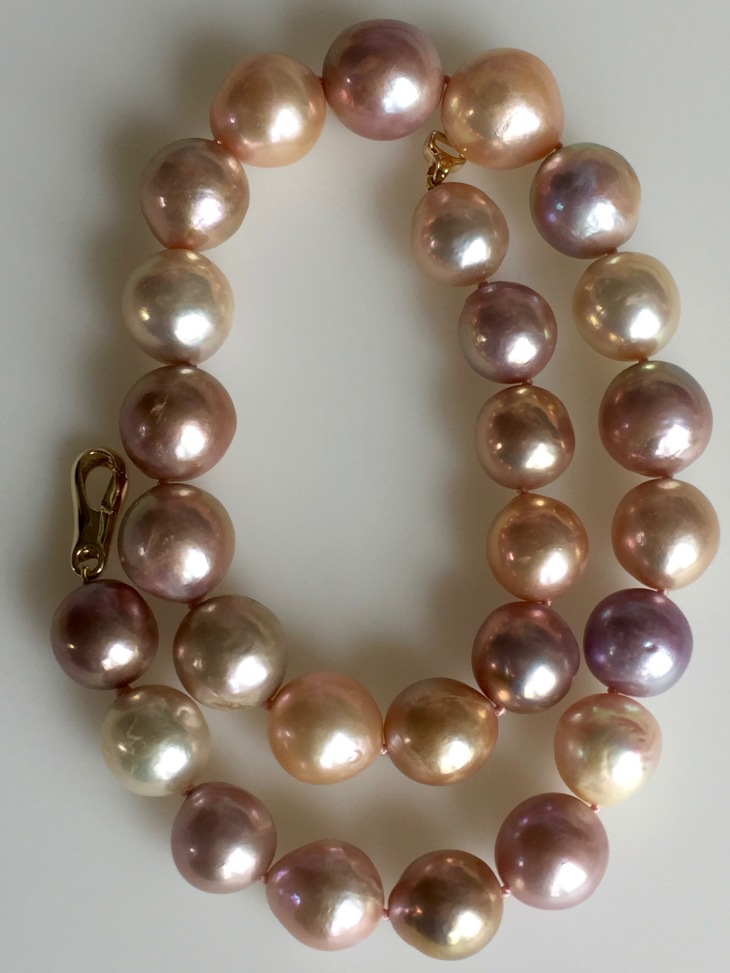
When the next Lincoln Center Crafts Fair rolled around six months later, I went back to Cathryn’s booth, situated right next to the annoying amplified violinist who never changes his repertoire. Cathryn had sold the strand of pearls I’d looked at before, so I bought the ones above. They’re lurid in a subtle way, if such a thing is possible. Like all pearls, they need low, diffuse light to bring out their luster. Judge a pearl in candlelight, not sunlight. Chinese pearl processors have to evaluate pearls under fluorescent light, and I don’t know how they do it. Come to think of it, fluorescent light is also what you find in New York’s jewelry district. It’s pretty awful.
As I walked away with the pearls tucked safely in my purse, I came to my friend Michele Berman’s booth. I’ve known Mica for a long time. She’s the one who made the lapis lazuli spider ring I wrote about in an earlier post. And now she, too, had discovered lurid pearls. Hers were the bumpy baroque kind, which I’d disdained at Cathryn’s booth but which suddenly looked alluring. I couldn’t buy them—not with the ink still wet on Cathryn’s receipt. But they haunted me.
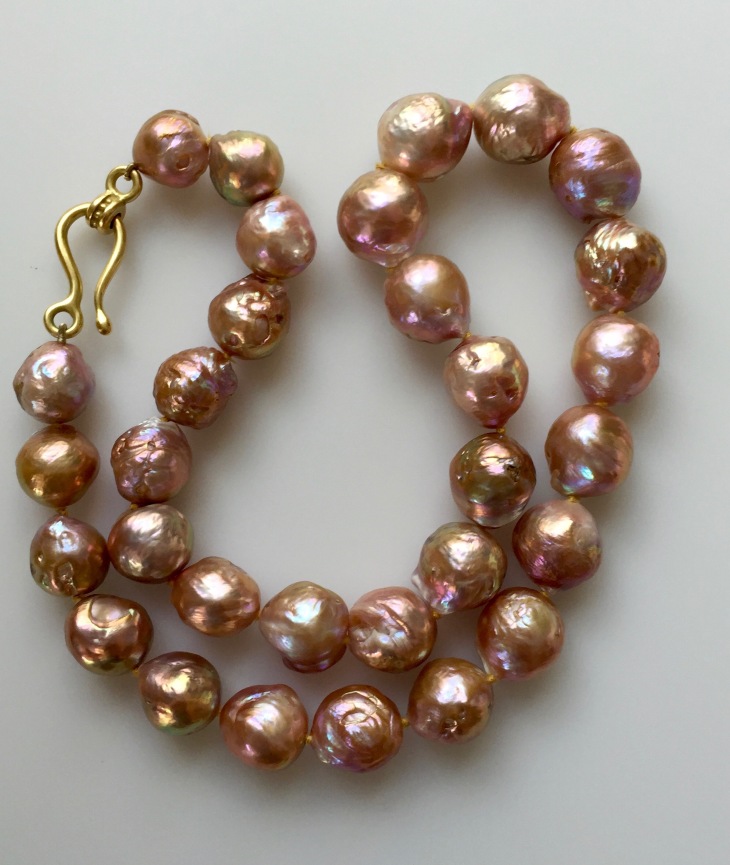
So, six months later… (Oh, stop laughing!) … I bought Mica’s pearls, which were somewhat less expensive than my first strand and had Mica’s amazing hook clasp. Pearls like these, with an uneven surface, offer insight into how pearls are formed: layer upon nacreous layer, with no two alike.
Pearls are made of the same material that lines the inside of the host mollusk’s shell: nacre, or mother-of-pearl, which is basically calcium carbonate. Nacre is secreted by the shell’s lining, or mantle. When a foreign particle gets lodged between shell and mantle, the mantle just keeps secreting nacre around the particle, and eventually, you get a pearl. Each layer of nacre is less than half a micron thick (a micron is one thousandth of a millimeter). So it takes time to form a pearl with a healthy coating of nacre—for Edison pearls, it takes up to four years. Luster and orient (a rainbow effect), so important to a pearl’s quality, are created by the reflection and refraction of light through all those layers of nacre.
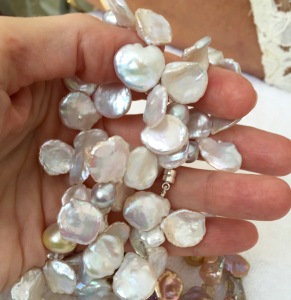
All modern pearls are cultured pearls. This just means that the foreign particle has been inserted on purpose. For freshwater pearls, these particles are either tiny pieces of mussel tissue or tiny beads made of mussel shell. I can’t speak to whether the mollusks suffer in this process. I don’t know. But I like to imagine that they take it in stride. After all, they’ve been making pearls since long before humans cultured them.
With the acquisition of Mica’s pearls, I now had two strands in a similar color palette. So, a year or two later, I made one more trip to Cathryn’s booth (and heard one more rendition of Méditation de Thaïs from the annoying violinist). Cathryn had a strand of high quality Ming pearls she’d been compiling over the years, pearl by pearl.
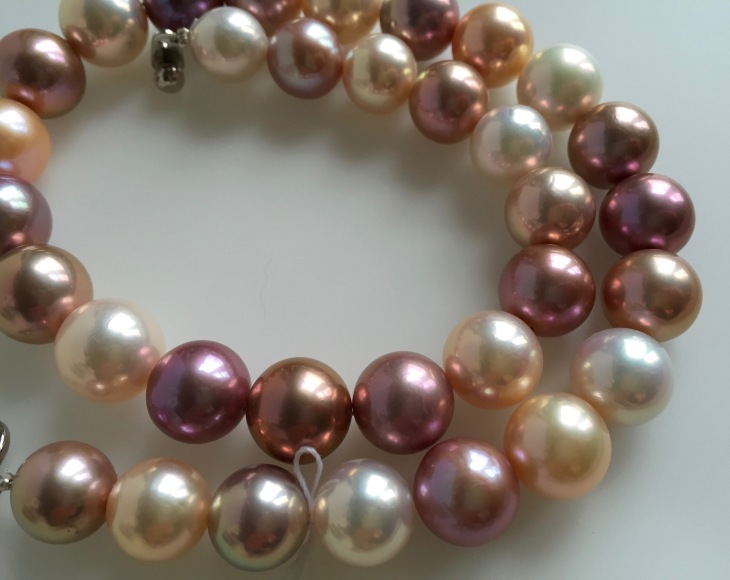
So—not without a twinge of regret—I traded in my first Mings and purchased the ones shown above and at the top of this post. What makes these pearls better? They’re rounder, cleaner, have a deeper luster and a more mirrorlike surface. They’re about as serious as this sort of pearl gets. And with them, I think—I hope!—that I’ve finally reached the end of my lurid tale.
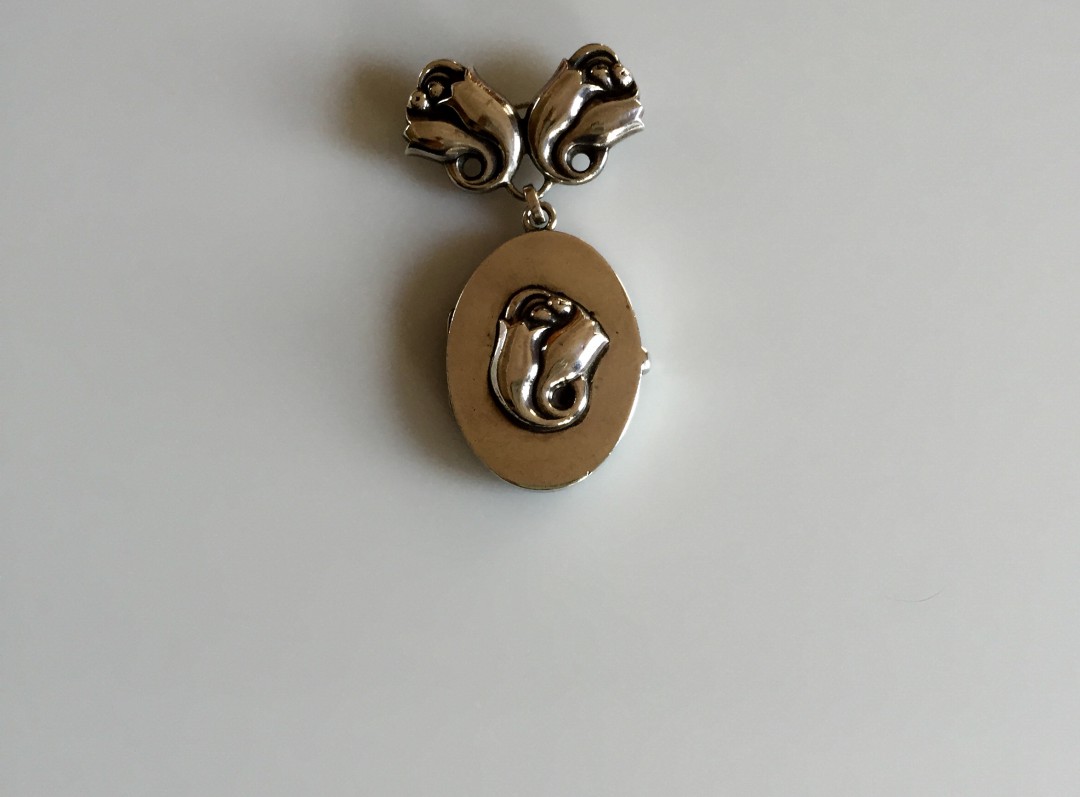
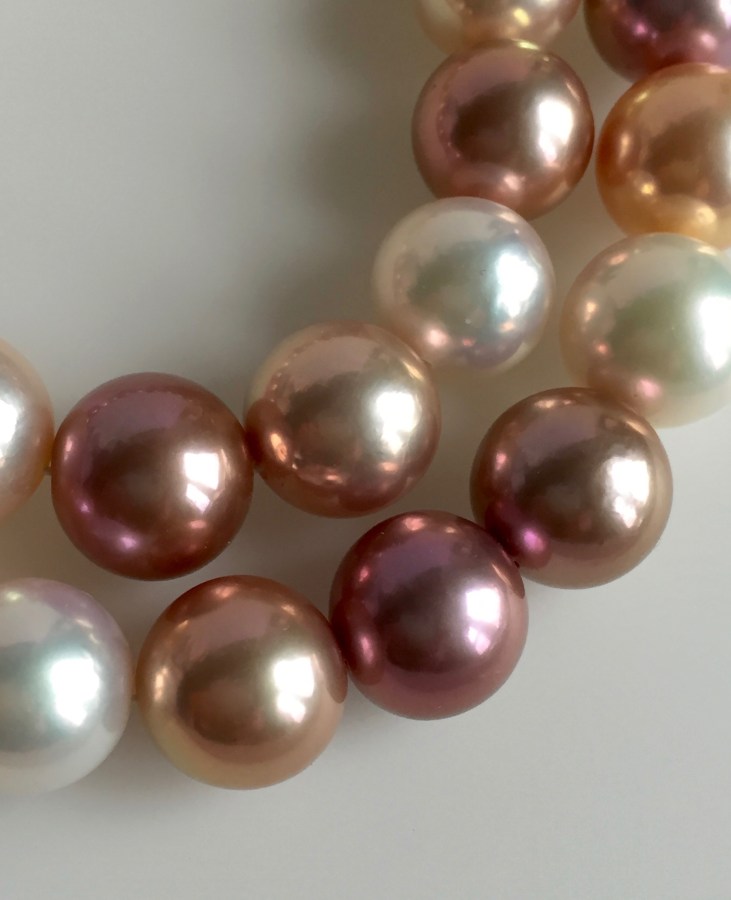
I love these pearls, and the details about how they turn into themselves. By sheer coincidence, while reading this I happened to be wearing a long strand of cultured pearls, doubled, that were given me by a treasured friend. I took them off, laid them on the desk in front of me and marvelled at them more. I have a strand of graduated pearls (natural) that I got on my twenty-first birthday from my mother. A jeweller once told me that you had to wear them regularly to maintain the lustre and shine. I don’t know how true that was but they are looking a little sad these days and I may need to put them next to my skin and see what happens.
LikeLiked by 1 person
Pearls are water gems, so if you store them in, say, a safe, you need to put a glass of water in there with them to keep them from drying out. They do love to be handled, and they love the oils from your skin. But they need to be kept away from hairspray, sunscreen, perfume–anything you put on your skin that has active chemicals or solvents in it. Pearls are hardier than we think. I’m looking at a photo of an earring from first century Rome, gold and pearls. You could wear it today.
LikeLiked by 1 person
I really want ‘Grace Pearl’ to be a person, as opposed to an organisation. ‘Lurid’ is a lovely pearly word. And you are right, Mica’s gold clasp is amazing and the lumpy pearls are something else….
LikeLike
KATHI JO WANTS THEM!
LikeLiked by 1 person
Would you know how to reach Cathryn Martinez? She made a ring for me several years ago and now I need to contact her about a replacement. Thanks for any help you can provide!
LikeLike
very nice inf0 keep up the work! thanks
Prada Watches http://www.pradaustore.com
LikeLike